How do we measure good EYFS physical development progress? Well, by using milestones. But these physical development milestones are not a one size fits all approach.
Knowing the amber and red flags to watch out for when assessing a child’s physical development progress can help to catch any concerns early and reassure parents.
Sarah Cooke (EYFS occupational therapist) shares what to look out for, how to make your nursery observations count, and some easy EYFS physical development activities to try.
Meet the expert: Sarah Cooke.
Sarah Cooke is a qualified occupational therapist. Having a strong background in paediatrics and schools, Sarah has worked across mainstream and SEND settings and clinical environments.
Sarah has experience working with premature babies, supporting them with physical development guidance. She is now a valued member of the Alder Hey Autism Assessment Team.
What is good physical development in the early years?
Physical development in the early years is one of the prime areas for learning. Children must play indoors and outdoors, helping them to develop physically. The EYFS Framework and Birth to 5 Matters both highlight the areas that physical development enhances through play:
- Balance and coordination.
- Posture and core strength.
- Upper body strength.
- Wrist stability.
- Body awareness.
- Muscle tone.
- Ball skills and hand-eye coordination.
- Bilateral coordination.
- Hand strength.
- Shoulder stability.
- Visual motor skills.
Skip ahead for EYFS physical development activities to try in your nursery (or encourage your parents to try them at home).
What are the EYFS physical development milestones?
Sarah reminds us that it is important to remember that every child develops at a different rate. Milestones guide occupational therapists and other physical development experts on what a ‘typically developing child’ might achieve and when.
It can be easy for practitioners (and parents) to become fixated on their child’s ability to reach a physical development milestone and become incredibly disheartened when it takes longer than expected. Parents can compare milestone achievements to other siblings or family friends, which can create panic and concern.
What are the EYFS physical development amber flags to watch out for?
Sarah explains how amber flags for each child are different and must be interpreted cautiously. No two children have the same upbringing, life experiences and genetic makeup; they will experience different physical development milestones at different times. And this is perfectly normal!
We share a few of an occupational therapist’s amber flags for EYFS physical development to boost awareness of what might be useful as ‘watch out and monitor’ signs as nursery practitioners. It is important to note that this brief list is not a one-size fits all approach and is by no means exhaustive.
EYFS physical development: 12 months:
- Unable to sit alone without support.
- No interest or motivation to progress from sitting to moving.
EYFS physical development: 18 months:
- Unable to walk independently (albeit wobbly!)
- A narrow or awkward walking gate.
- Does not imitate the speech of others or facial expressions.
EYFS physical development: 3 years:
- Running is very awkward or stiff.
- Walking on toes consistently (6 months after walking independently).
- Unable to climb up and down the stairs (with bannister assistance).
EYFS physical development amber flags:
- Consistent drooling, difficulties chewing and eating after the age of 3.
- Asymmetric movements (more than just right- or left-hand dominance).
- Gross movement challenges or avoidance when motivated after age 3-4.
EYFS physical development red flags:
- Any regression or loss of consistent physical development skills (this will require immediate paediatrician attention).
Top tip:
If you are concerned about a child’s early physical development progress, record all observations and refer the child to the community paediatric team.
EYFS physical development observations for nursery practitioners.
Nursery practitioners often experience many children’s ‘firsts’ during their time at nursery. It may be their first steps, jumping jack or friendship. It is a privilege to be able to witness these golden moments.
Parents appreciate videos or images shared of their child throughout their nursery day, especially when they have achieved a milestone. Sharing and celebrating how well their child is developing in your care can help boost parent and nursery relationships.
When nursery practitioners are recording their observations, it is useful to be mindful of physical development amber flags. Encourage your nursery practitioners to look out for the following:
- What pre-writing skills look like.
- Asymmetrical physical movements.
- Loss or regression of skills.
- What that child’s ‘normal’ is (accessible online through the child’s online learning journey).
- Whether the movement observed has been completed independently.
- Not just if they can complete the action or movement but how they complete it.
- Signs of hypermobility in children.
- Consistency of skill development.
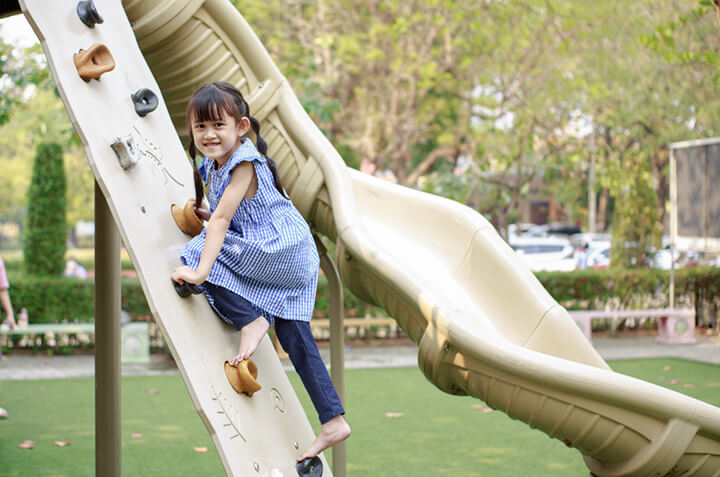
EYFS physical development gross and fine motor skill activities for nursery
Gross motor skills are essential for developing fine motor skills; jumping jacks go hand-in-hand with eventually being able to tie laces and use buttons independently. Sarah reminds us that gross motor activities in EYFS settings are important for progressing towards tabletop activities when they are school-age. Here are some of our favourite EYFS activities to boost physical development.
Physical development activities: Balance and coordination.
- Walk and crawl on uneven surfaces like tunnels.
- Use a balance beam, chalk, or tape to follow a line.
- Sit and roll a ball to each other on an uneven surface like a cushion.
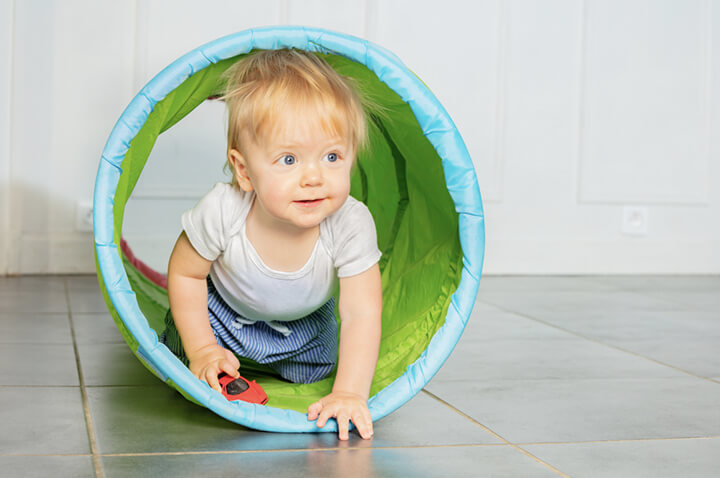
Physical development activities: Posture and core activities.
- Kneel and balance on flat and uneven surfaces.
- Wheelbarrow walks with an adult or peer.
- Catch a ball whilst kneeling.
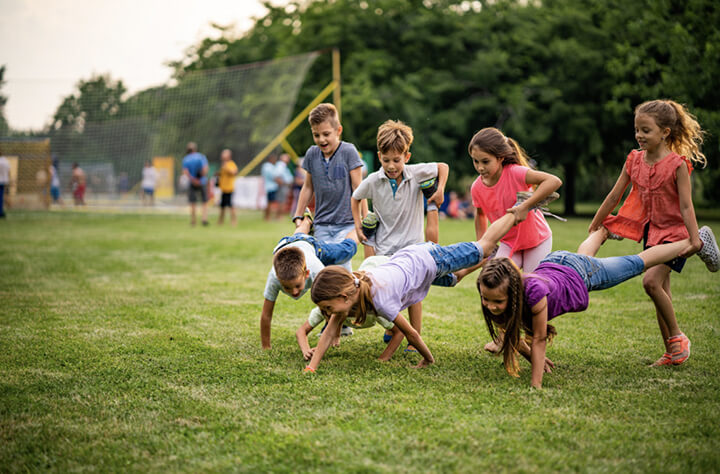
Physical development activities: Upper body strength.
- Combat crawl under a net on a grassy surface.
- Explore tummy time.
- Throw different balls into a hoop over their head height (it doesn’t have to be as heavy as a basketball!)
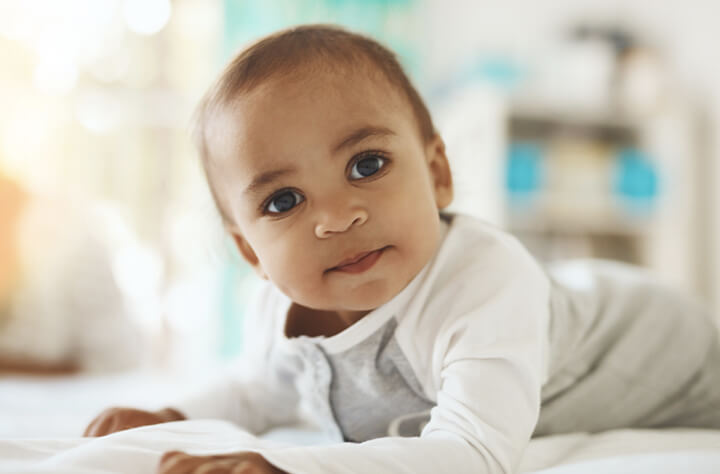
Physical development activities: Wrist stability.
- Play with a yoyo.
- Pour water into different containers.
Physical development activities: Body awareness.
- Create different shapes with their body.
- Play follow the leader.
- Play, Simon Says.
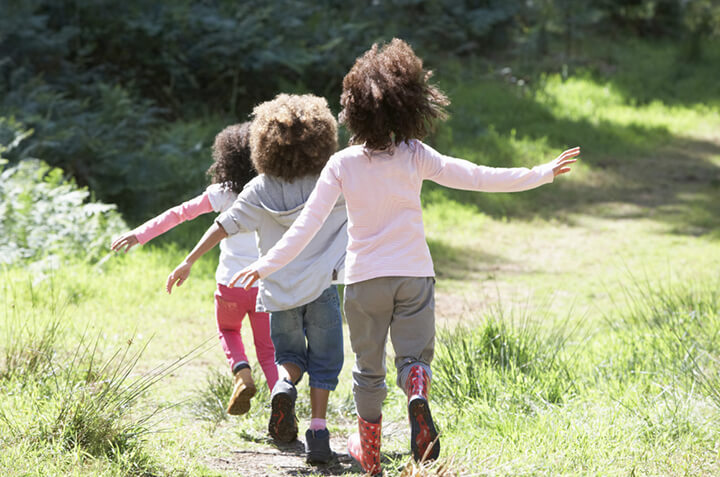
Physical development activities: Muscle tone.
- Balance a beanbag on their head and travel with it.
- Run up steps and hills.
- Join in with toddler yoga.
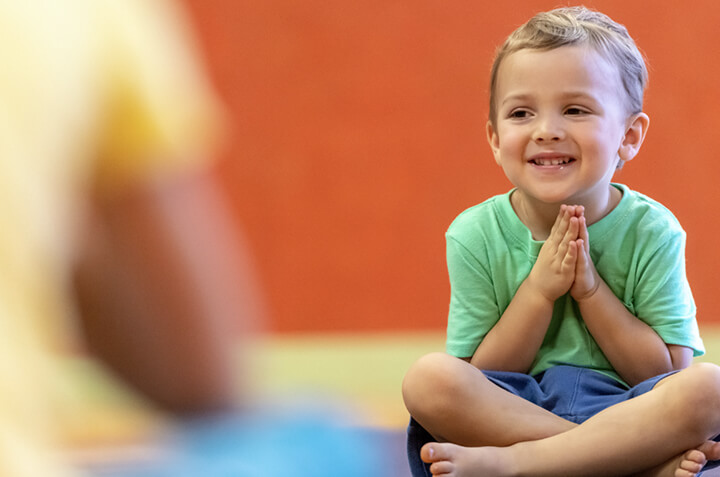
Physical development activities: Ball skills and coordination.
- Play creative catch- use slow-to-catch objects like a scarf for a more inclusive activity.
- Knock down skittles- you can use recycled bottles for this too!
- Participate in balloon volleyball.
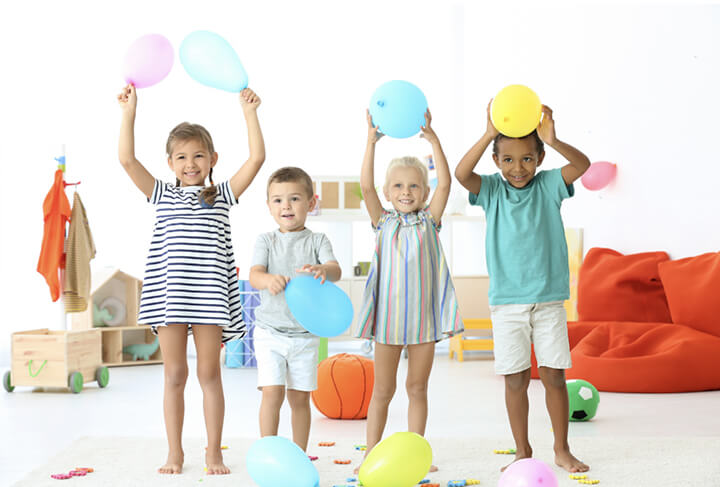
Physical development activities: Bilateral coordination.
- Blow bubbles whilst holding the bottle in the other hand.
- Cut out shapes.
- Button practice.
Physical development activities: Hand strength.
- Use Theraputty to make shapes.
- Make patterns with pegboards.
- Thread large beads onto a string.
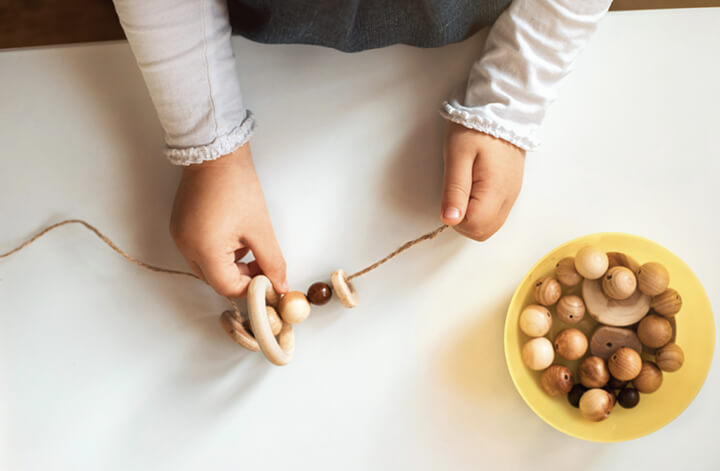
Physical development activities: Shoulder stability.
- Climb different pieces of equipment.
- Crawl across uneven surfaces.
- Carry items from one place to another.
Physical development activities: Visual motor.
- Complete simple word searches.
- Read Where’s Wally.
- Complete a jigsaw puzzle.
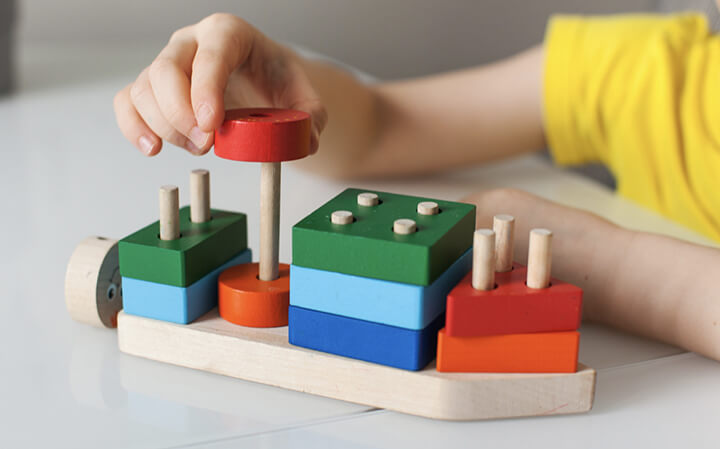
For more brilliant EYFS activities, check out our Ultimate guide to EYFS activities blog post and easily cover the seven areas of learning and development!